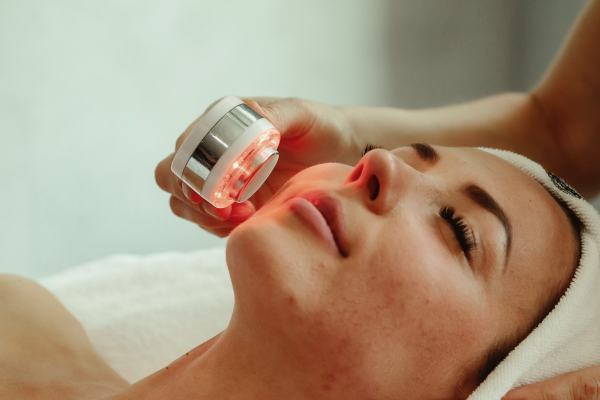
Photodynamic therapy (PDT) offers a non-invasive and highly effective solution for treating actinic keratosis (AK) and reducing the risk of skin cancer development by targeting hidden sun damage. Actinic keratoses are precancerous skin growths that, if left untreated, may develop into basal or squamous cell carcinoma. PDT is commonly used to treat AK on the face or scalp, but it’s also frequently utilized on the arms, hands, neck, or chest. This innovative therapy harnesses two essential components to repair and rejuvenate your skin.
What to Expect from Your Treatment:
Firstly, Ameluz, an FDA-approved topical medication containing a naturally occurring compound called aminolevulinic acid, is applied to your skin. This gel effectively targets premalignant skin lesions, specifically actinic keratoses.
Secondly, the 635 nm red light will be positioned over the treatment area. Exposure to the light therapy generally takes 20 minutes. During this time, you will wear protective eyewear. You may feel itching or burning on the affected areas during treatment and for the hours following treatment, after which discomfort should dissipate. The treated area can become red and scale or peel for two to four weeks following treatment. Avoidance of sun exposure is required for 24 hours following the procedure.
Will Treatment be Covered by My Insurance?
PDT is covered by most insurances, including Medicare, for the treatment of actinic keratosis (AK) on the face and scalp. Coverage for the treatment of actinic keratosis on other areas such as the neck, chest, arms, and hands varies by insurance. At Charleston Dermatology, we are here to assist you with any questions regarding insurance coverage and eligibility for photodynamic therapy treatment. Feel free to ask us about these options during your consultation.